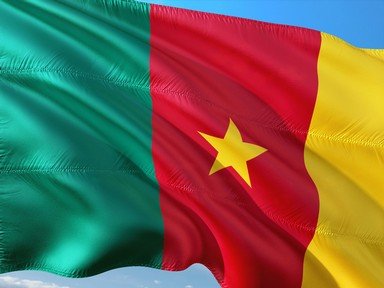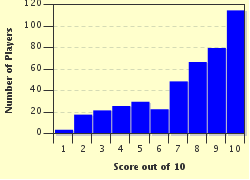Quiz Answer Key and Fun Facts
1. Cameroon is a country in the west of Central Africa. Which of the following countries does Cameroon NOT share a border with?
2. The flag of Cameroon features three vertical bands and a star in the middle band. What colour does not appear on the Cameroon flag?
3. On January 1, 1960 French Cameroon became independent and became the Republic of Cameroon. Which neighbouring state merged with French Cameroon on the first of October 1961?
4. Standing at approximately 4040 metres (13255 feet) to the peak, Mount Cameroon is the highest point in Cameroon. Is it an active, dormant or extinct volcano?
5. Yaoundé is the capital city of Cameroon. Which city has an international airport and is Cameroon's largest port?
6. Which form of currency is used in Cameroon?
7. Cameroon is extremely diverse in terms of terrain and climate. Which of these will you NOT find in Cameroon?
8. One of the major geographical features is the South Cameroon Plateau. It experiences two wet and two dry seasons, one long and one short of both. When does it experience its long wet season?
9. The Wouri River gave Cameroon its name after a Portuguese explorer named it "Rio dos Camarões". What does "Rio dos Camarões" mean?
10. The crater lake of Lake Nyos in the north-west region of Cameroon was called the "World's Deadliest Lake" by Guinness World Records in 2008. In 1986, it was the cause of one of the darkest times in Cameroon history after a natural disaster killed thousands. What happened?
Source: Author
Daaanieeel
This quiz was reviewed by FunTrivia editor
Tizzabelle before going online.
Any errors found in FunTrivia content are routinely corrected through our feedback system.

